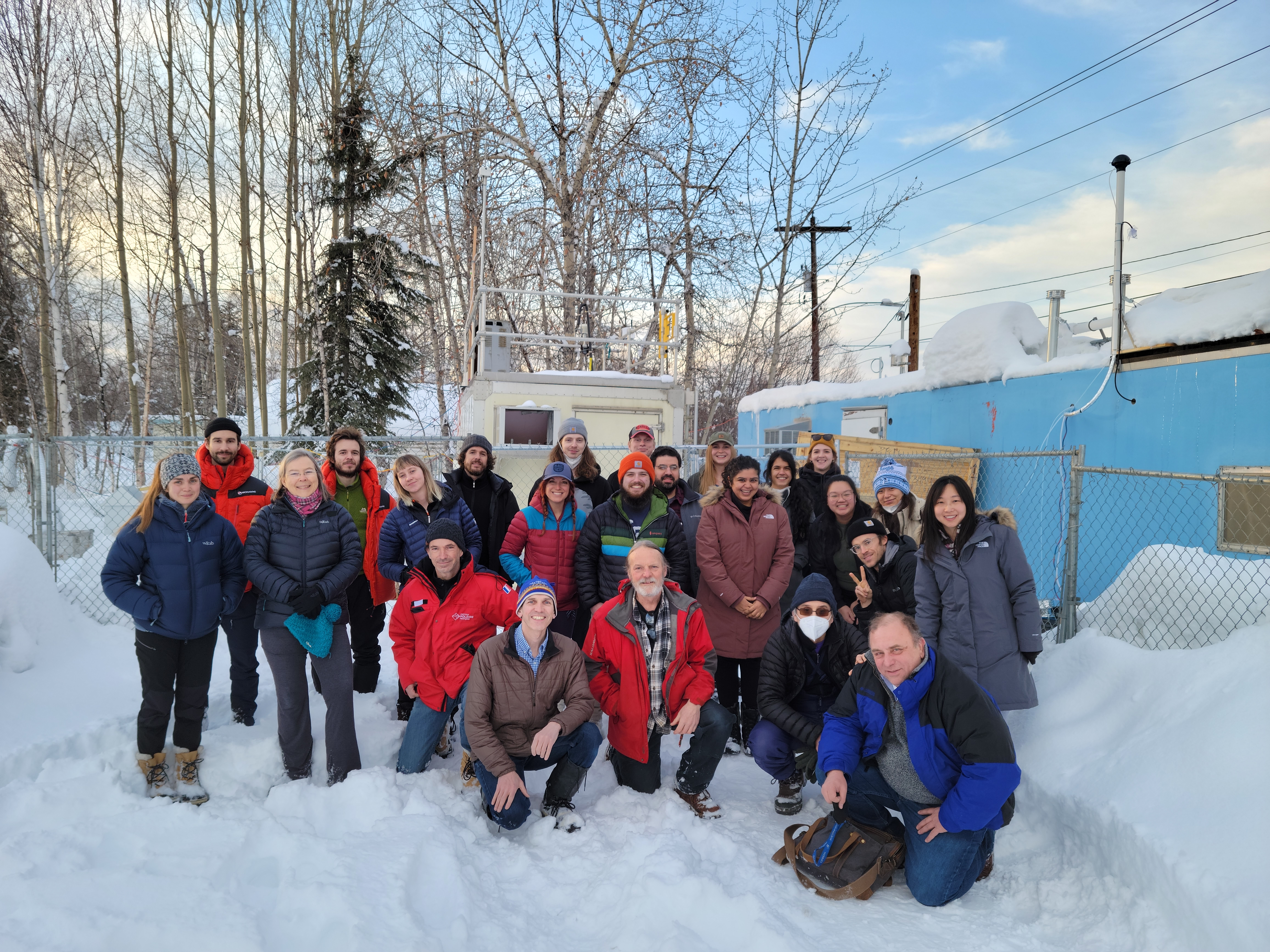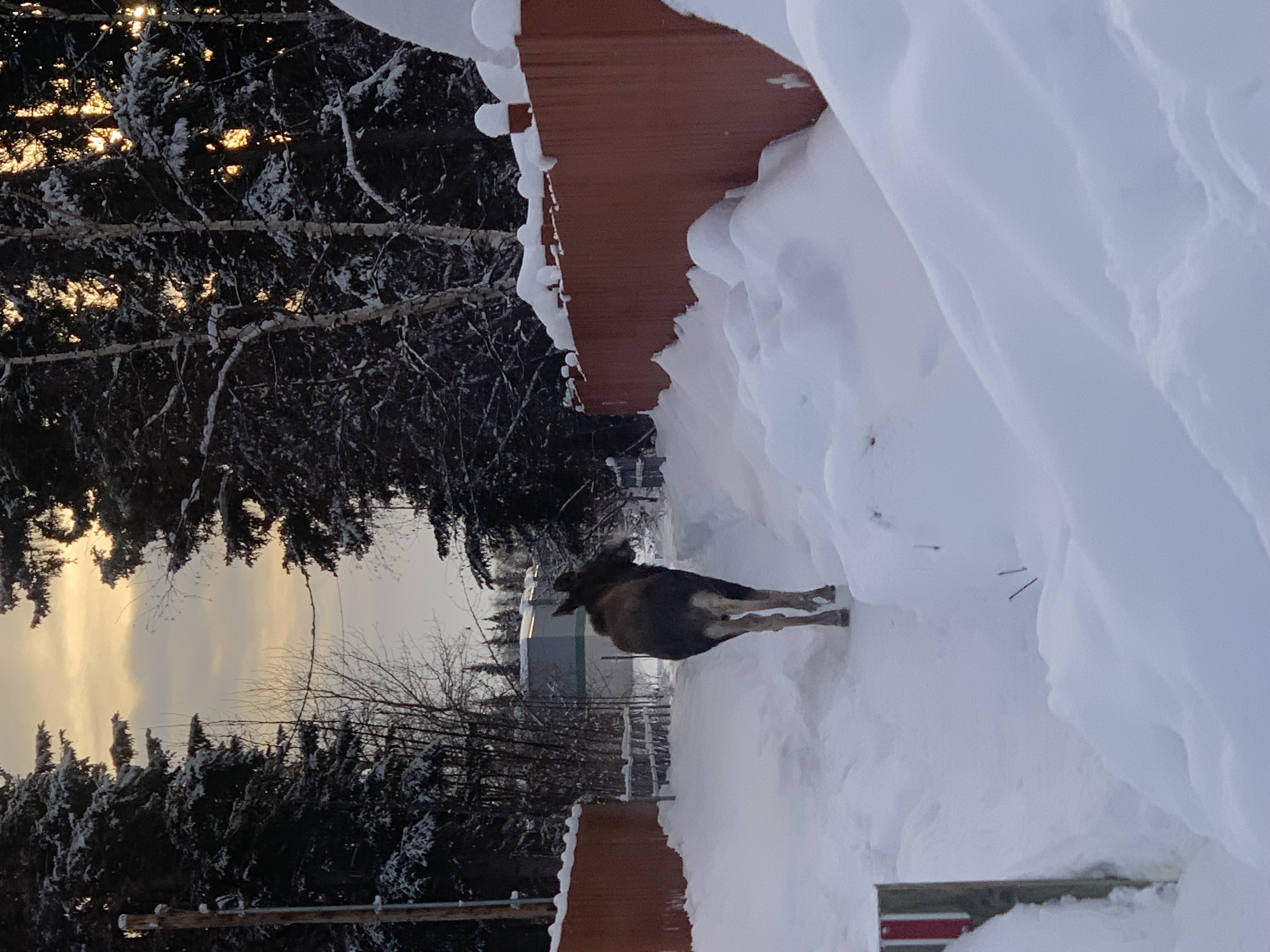UCI scientists studying air pollution in Fairbanks, Alaska

The ALPACA field campaign group, which includes researchers from the UCI Department of Chemistry — Sukriti Kapur, Kasey Edwards and Ting Fang.
Sukriti Kapur is a Ph.D. student in the UCI Department of Chemistry, and up until this year she’d never seen a moose. That changed in January when, as part of a field campaign to study air pollution in Alaska, she drove out one morning and right in front of her there was a moose running in the snow-covered road. In a video, the moose is running on the left side of the road, and it’s huffing and puffing air that looks as clean as can be – only it isn’t.
Kapur is an atmospheric chemist who studies pollution in the lab of Manabu Shiraiwa at UCI. She was in Fairbanks because, despite that city’s pristine winter days giving the impression of a place without bad air pollution, Fairbanks, in a recent American Lung Association report, ranked sixth in the nation (only two spots behind Los Angeles) on a list of U.S. cities with the worst air.
That ranking helped spark a field campaign called Alaska Layered Pollution and Chemistry Analysis (or ALPACA), which ran from January 17 to February 25, and which saw Kapur, alongside Ph.D. student Kasey Edwards, postdoctoral research Ting Fang and 50 other scientists from around the world, work to quantify the exact nature of Fairbanks’ pollution problem.
“The aim of this study is to study winter-time pollution,” said Kapur. “The chemistry of the pollutants as they behave in the cold is not studied so much.”
Kapur explained that similar field campaigns have focused on air pollution in cold places like Denver, Utah and regions in the eastern U.S. But Fairbanks has colder and darker conditions than these places, and “there remain important knowledge gaps in our understanding of the wintertime pollution and chemistry taking place at this location,” Kapur said. Those pollutants include particulate matter and harmful gases that, when inhaled by people or moose or any other animal, can cause respiratory and cardiovascular problems.
A place like Fairbanks is a pollution hotspot for a few reasons. One reason is that the city, much like L.A., sits in a geographic basin, meaning pollution emitted by cars and trucks and industrial activity has nowhere to go but the basin. Another reason is one that’s unique to cold places like Fairbanks, where the cold climate creates stratified air wherein colder and therefore denser air sinks and sits at the bottom of the basin. This creates a cold air prison that prevents airborne pollution from rising and escaping.
“This is a very unique environment,” said Kapur.
And the effects are apparent. Kapur set up air filtration devices both indoors and outdoors. The devices ran for 23.5 hours every day, filtering out particles 2.5 micrometers in diameter or smaller. In the half hour the device didn’t run, the team would change out the filters, and what they saw there was the sort of black and grey you’d expect to find in an ashtray.
Now, the group is analyzing the samples to study health-damaging chemicals found in the particles. They’re investigating so-called free radicals, which can damage the cells in our bodies. According to Edwards, preliminary results are showing that the free radicals her team is studying tend to stick around in the air at higher concentrations when winters are relatively long and cold — results that may one day inform public health efforts to curb air pollution in the city as well as efforts to inform the city’s population about the potential health impacts of their air.
“Through international collaborations,” said Shiraiwa, “we hope to advance our fundamental understanding of particle processes in winter air pollution and their impacts on air quality in cold environments.”


